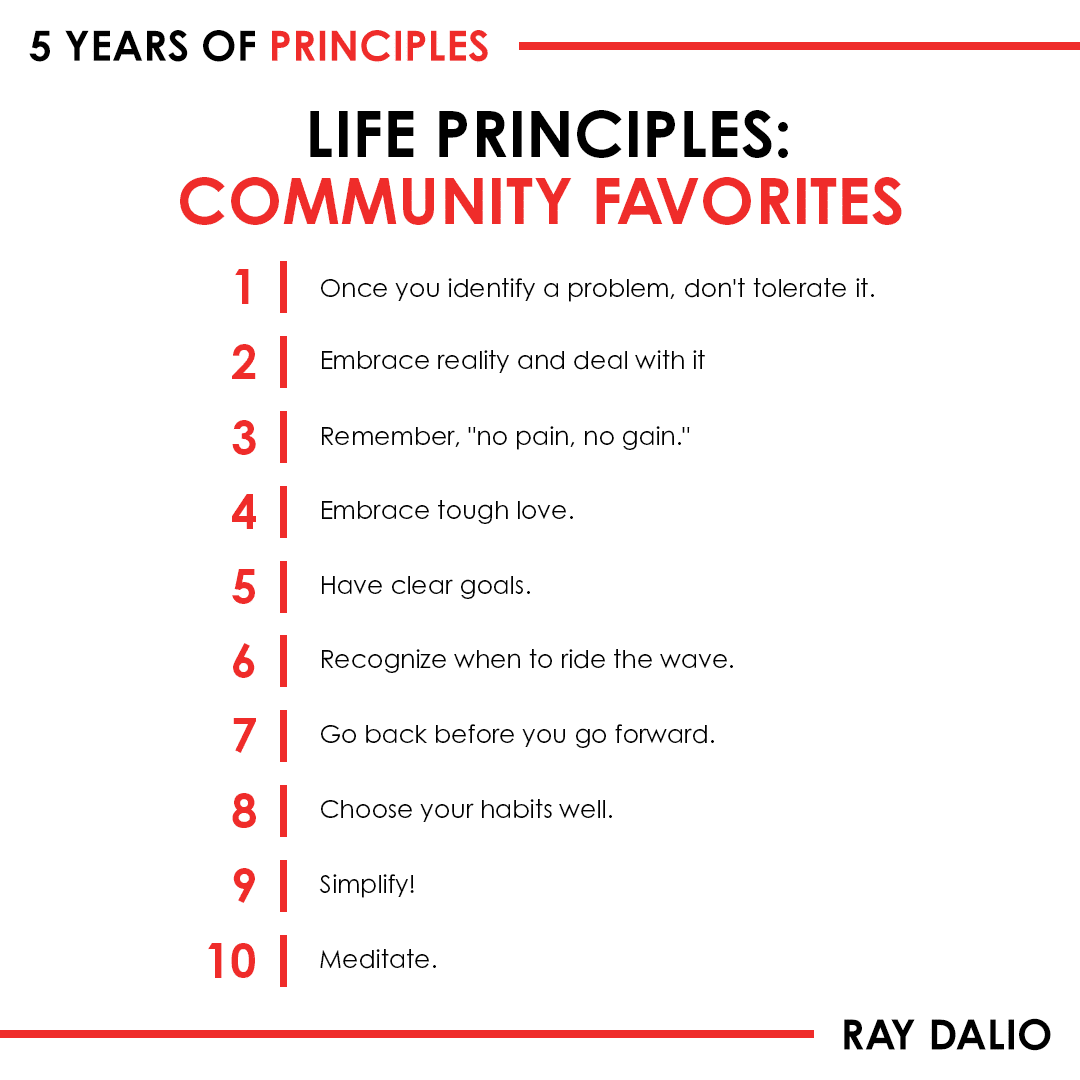
4 min. Read
Cultivating a strong company culture is essential for business success. One powerful way to reinforce and enhance company culture is through celebrating milestones. These events mark achievements and boost employee engagement, fostering a sense of belonging and a positive work environment.
Before diving into the importance of company culture events, it’s crucial to understand why it is so important. Company culture encompasses employees’ values, beliefs, attitudes, and behaviors. It guides how employees interact with each other, clients, and the community.
A strong company culture can ensure higher employee satisfaction, increased productivity, improved retention rates, and a positive reputation in the marketplace. On the other hand, a weak or toxic culture can lead to disengaged employees, high turnover, and a negative bottom line.
A positive culture lays the foundation for a thriving workplace environment where employees are motivated to excel and feel valued and respected. It, in turn, leads to higher levels of employee engagement, a crucial factor in the success of any organization. Let’s explore how company culture events contribute to organizational success.
One of the key benefits of celebrating milestones is its positive impact on employee engagement. Engaged employees are more dedicated to their work, more productive, and more likely to stay with the company long-term.
To enhance employee engagement through company culture events, consider the following strategies:

Another important aspect of celebrating milestones is recognizing and rewarding people for their hard work and dedication. An effective employee recognition program can help boost morale, improve job satisfaction, and increase employee loyalty.
When designing an employee recognition program, consider the following:

Discover how to leverage the right technology and implement a proactive strategy that cultivates talent and facilitates team collaboration.
Company culture events allow employees to connect, engage, and celebrate together. They can range from small team-building events to large-scale celebrations. Here are some examples:
Implementing these company culture events can improve employee engagement and create a positive workplace where people feel valued, supported, and motivated to do their best.
Celebrating milestones through company culture events is a powerful way to reinforce values, boost engagement, and create a positive work environment. Organizations can cultivate a strong and vibrant company culture that drives success by implementing effective employee engagement strategies, recognizing employees’ contributions, and hosting engaging company culture events.
To learn more about how you can create a positive company culture by celebrating milestones, explore Most Loved Workplace (MLW) today. We have a community of like-minded professionals dedicated to building thriving workplaces where employees feel valued and engaged. Let’s celebrate success together and create a workplace culture that inspires greatness.

6 min. Read
Creating a culture of connectivity is crucial for fostering a positive workplace environment where employees feel valued, engaged, and connected. In today’s fast-paced, digital, and often remote world, employees crave more meaningful connections with their colleagues and organizations.
Building a culture prioritizing connectivity can increase employee engagement, improve collaboration, and create a stronger sense of belonging. Here are some strategies to create a culture that feels connected and fosters employee connections.
A company culture is essential for creating a positive workplace where employees feel motivated and engaged. A well-defined company culture helps establish employees’ sense of identity and belonging, guiding their actions and interactions with the organization. Here are some key strategies to nurture company culture effectively:
Clearly defining and communicating your company’s core values is the first step toward nurturing a strong company culture. These values can influence decision-making and behavior at all levels of the organization. When employees understand and align with these values, they are more likely to feel connected to the organization’s mission and purpose.
Leaders are vital in shaping company culture. They embody the values and behaviors they want to see in their employees. Leaders set the direction for the entire organization by leading by example, and others follow suit. When leaders demonstrate integrity, respect, and commitment to the company’s values, it reinforces the importance of these values to the entire team.
Open communication is the key to a positive company culture. People should feel comfortable sharing their ideas, concerns, and feedback with management and colleagues. It can be accomplished through regular team meetings, open-door policies, and anonymous feedback channels. Employees who feel valued are more likely to be engaged and committed to their work.
Another important aspect of nurturing company culture is providing opportunities for growth and development. Employees should have access to training programs, mentorship opportunities, and career advancement paths. Employees who feel that the organization supports their growth are more likely to be engaged and motivated.
Acknowledging employees for their achievements is crucial for maintaining a positive company culture. It can be done using formal recognition programs and informal gestures, such as praise and thank-you notes. Those who feel appreciated for their contributions are more likely to be motivated and committed to the organization.
Nurturing a strong company culture requires a commitment from leaders and employees alike. Organizations can create an engaging work environment where employees thrive by defining and communicating company values, leading by example, encouraging open communication, providing growth opportunities, and recognizing achievements.
Fostering employee engagement is essential for creating a positive and productive workplace. When people are engaged, they are more committed to their work, more likely to go above and beyond, and more satisfied with their jobs.
To foster employee engagement, organizations must create a workplace where people feel valued, supported, and connected to their work and colleagues. It can be achieved by doing the following:
Create channels for open and honest communication within the organization. It includes regular feedback sessions, town hall meetings, and open-door policies. Creating open and honest communication channels is essential for building trust and transparency within the organization.
In addition to regular feedback sessions and town hall meetings, consider implementing anonymous tools to encourage candid feedback. Open-door policies can also make employees feel more comfortable sharing their thoughts and concerns with management, fostering a culture of open communication.
Offering training and development allows employees to grow personally and professionally. It shows that you are invested in their success. Offering these programs demonstrates your commitment to employee growth and development.
Consider providing mentorship opportunities, tuition reimbursement programs, or access to online learning programs. Investing in your employees’ development enhances their skills and increases their engagement and loyalty to the organization.

Discover how to leverage the right technology and implement a proactive strategy that cultivates talent and facilitates team collaboration.
Effective team collaboration is crucial for achieving organizational goals and fostering innovation. By promoting collaboration, organizations can harness their teams’ collective skills and knowledge, leading to improved problem-solving and decision-making.
Encouraging open communication, creating cross-functional teams, and providing tools for collaboration can promote a collaborative culture within the organization.
Foster a collaborative environment that encourages teams to work together towards common goals. Encourage cross-functional collaboration to break down silos.
Use technology to facilitate collaboration, especially in remote or hybrid work environments. Tools like Slack, Microsoft Teams, and Zoom can help teams stay connected and engaged.

Effective communication can help build strong connections and ensure everyone is on the same page. Organizations can implement communication strategies such as regular team meetings, transparent communication channels, and feedback mechanisms to keep employees informed and engaged.
By prioritizing communication, organizations can reduce misunderstandings and improve overall productivity.
Communicate openly and transparently about company goals, challenges, and decisions. Transparency builds trust and ensures a sense of belonging.
Keep employees informed about company news, changes, and updates. It helps them feel connected to the organization’s mission and vision.
Remote work presents unique challenges, such as isolation, collaboration difficulties, and work-life balance. Organizations can implement strategies such as regular check-ins, virtual team-building activities, and flexible work schedules to address these challenges.
Organizations can ensure a more inclusive work environment with increased productivity by supporting remote employees and addressing their challenges.
Encourage people to ensure a healthy work-life balance, especially in remote work settings. Provide tools for managing stress and maintaining well-being.
Organize virtual team-building activities, happy hours, or coffee chats to help employees feel connected to their colleagues.
Creating a culture of connectivity requires a concerted effort from leaders and employees alike. Organizations can create a Most Loved Workplace® where employees feel connected, engaged, and valued by nurturing company culture, fostering employee engagement, promoting team collaboration, implementing effective communication strategies, and addressing remote work challenges.
To learn more about creating a Most Loved Workplace® that fosters employee connections and promotes a culture of connectivity, explore MostLovedWorkplace.com today.

6 min. Read
Change is inevitable in the business world today. Whether due to mergers, acquisitions, new leadership, or new corporate structures, organizations must navigate these changes while maintaining a strong company culture. This article explores best practices for maintaining a most-loved workplace’s strong culture during periods of change, focusing on company culture and change management strategies.
Periods of change can have a significant impact on company culture. Employees may experience uncertainty, stress, and a need for clarity about their roles and responsibilities. As a result, employee engagement and morale can suffer, causing decreased productivity and increased turnover. Organizations need to address these challenges and maintain a positive workplace culture proactively.
During periods of change, clear communication is key to helping employees understand the reasons behind the changes and how they will be affected. Organizations should provide regular updates and opportunities for employees to ask questions and provide feedback. This transparency can help alleviate uncertainty and build trust within the organization.
Additionally, organizations should focus on supporting employees through change by offering resources and training to help them adapt to new roles or responsibilities. Providing coaching or mentoring programs can also be beneficial, as they can help employees navigate the changes and feel supported throughout the process. By investing in employees’ well-being during periods of change, organizations can maintain a strong and resilient company culture.

Discover how to leverage the right technology and implement a proactive strategy that cultivates talent and facilitates team collaboration.
Organizations experience periods of change for various reasons, often driven by external factors or internal decisions. These changes can profoundly impact the company’s culture, employee morale, and overall performance. Understanding the common reasons for these changes is crucial for organizations to navigate them effectively and maintain a strong culture of a Most Loved Workplace.
When two companies merge, or one company acquires another, the organizational structure and culture can significantly change. It can result in redundancies, changes in reporting lines, and the integration of different work cultures. Employees may feel uncertain about their future roles and responsibilities, leading to anxiety and decreased morale.
Additionally, mergers and acquisitions can create challenges related to communication and alignment. Different organizational cultures and values may clash, requiring careful navigation to ensure a smooth integration process. Leadership must provide clear communication and direction to alleviate issues and foster a sense of unity among employees from both entities.
Leadership changes can bring new strategies, priorities, and working methods, impacting the company culture. A new leader may have a different vision for the organization, leading to process changes, communication styles, and decision-making. Employees may need time to adjust to the new leadership style and direction, which can impact their engagement and motivation.
Restructuring initiatives to improve efficiency or respond to market changes can also lead to periods of change. These initiatives may involve reorganizing departments, the introduction of new roles or responsibilities, and changes in reporting relationships. Employees may feel uncertain about how these changes will impact their jobs and future, leading to stress and decreased morale.
Other common reasons for periods of change include changes in market conditions, technological advancements, regulatory changes, and the need to remain competitive. These factors can require organizations to adapt quickly, leading to changes in processes, systems, and organizational structures. Employees may need support to navigate these changes and understand how they can contribute to the organization’s success during these challenging times.
 Organizations must have one employee listening platform to collect and analyze employee feedback during a change. This platform should provide a unified view of employee sentiment and enable organizations to identify areas for improvement.
Organizations must have one employee listening platform to collect and analyze employee feedback during a change. This platform should provide a unified view of employee sentiment and enable organizations to identify areas for improvement.
Having one employee listening platform during periods of change provides several key benefits. Firstly, it ensures that all feedback is collected and analyzed consistently, allowing organizations to compare data over time and track progress on initiatives.
Secondly, a unified platform helps identify trends and patterns across different departments or teams, enabling organizations to address systemic issues impacting employee engagement and morale.
Lastly, a centralized platform can streamline the feedback process, making it easier for employees to provide input and for leaders to take action based on the insights gained.
Workplacely is a platform that can help organizations maintain a strong culture during periods of change. It offers multiple surveys and can integrate with other surveys to provide a comprehensive view of employee sentiment. With Workplacely, organizations can easily collect and analyze employee feedback, identify improvement areas, and develop targeted action plans.
One of the key features of Workplacely is its ability to provide customized surveys that can help organizations get additional insights into their employees’ thoughts and feelings. By leveraging these surveys, organizations can better understand their employees’ needs and preferences, which can help them tailor their change management strategies accordingly.
Workplacely empowers employees by providing them a platform to voice their emotions and sentiments and coach themselves and their peers. It also equips leadership teams to take action by providing real-time insights and reducing survey fatigue.
The platform offers unprecedented insights with advanced AI tools, including a robust AI-driven recommendation engine and curated custom surveys. Workplacely helps organizations become the Most Loved Workplaces, which experience higher customer satisfaction, profitability, and lower turnover.
Moreover, Workplacely goes beyond traditional engagement surveys by measuring love, not just engagement. This unique approach allows business leaders to gauge employees’ affection and regard for their workplace, leaders, and peers. By focusing on love as a metric, organizations can better understand employees’ emotional connection with their work environment, leading to more meaningful actions and improvements.
You can learn more about Workplacely, its features and benefits, and how they can help your organization maintain a strong culture during periods of change here.
Maintaining a strong culture of a Most Loved Workplace during periods of change requires a proactive approach to change management and a focus on company culture. Using tools like Workplacely, organizations can effectively navigate periods of change and ensure that their employees remain engaged and motivated.
Suppose you’re interested in learning more about how a Most Loved Workplace uses the Workplacely platform to benefit your organization, especially during periods of change. In that case, you can get in touch with us today.

5 min. Read
Fostering a workplace culture that inspires and motivates top talent is pivotal for organizational success today. Recognizing the intrinsic link between employee recognition and workplace satisfaction, companies are embracing strategies beyond conventional norms. This article explores the art of creating a culture that prioritizes recognition, satisfaction, and inspiration providing insights into effective programs and initiatives.
Recognition is more than a feel-good moment; it inspires motivation and increased engagement. Organizations witnessing the positive impacts of recognition often incorporate tailored programs that acknowledge diverse contributions. Implementing flexible employee recognition programs ensures inclusivity, allowing every team member to feel valued.
Tailored recognition programs can range from simple, personal peer-to-peer acknowledgments of a job well done to more formalized award programs for exceptional achievements. The key is celebrating diversity in contributions and fostering an inclusive atmosphere where each team member feels appreciated. Employees are individuals, and having a variety of recognition programs to personalize recognition for each employee will help create a workplace culture that is personalized to unique employees.

Discover how to leverage the right technology and implement a proactive strategy that cultivates talent and facilitates team collaboration.
Workplace satisfaction is a multifaceted concept encompassing various aspects of the employee experience. Innovative strategies employed by leading organizations focus on holistic well-being beyond traditional benefits. Prioritizing a flexible work environment, professional development, and maintaining a healthy work-life balance are integral components.
Initiatives promoting flexible work hours, remote work options, and mental health support significantly contribute to employee satisfaction. Forward-thinking organizations understand that a satisfied workforce is more likely to be productive and loyal. Here is a deep dive into the strategies that can ensure workplace satisfaction.
Embracing flexible work hours is a strategic move that acknowledges the diverse needs of employees. This approach recognizes that the traditional 9-to-5 model may only suit some. Flexibility allows employees to customize their work hours, ensuring a better work-life balance and reducing stress.
In the era of digital connectivity, remote work has become a defining feature of modern workplaces. Providing remote work options not only accommodates the needs of a geographically dispersed workforce but also demonstrates trust in employees’ ability to deliver results regardless of their physical location.
Acknowledging the importance of mental well-being, leading organizations are implementing mental health support programs. These initiatives include counseling services, stress management workshops, and awareness campaigns. Prioritizing mental health contributes to a positive work environment and enhances job satisfaction.
Investing in employees’ professional growth is a win-win strategy. Organizations that prioritize professional development through training, workshops, and mentorship programs not only enhance the skill set of their workforce but also convey a commitment to individual career progression. It, in turn, fosters a sense of loyalty and job satisfaction. One of the themes that many Most Loved Workplace® companies hear from their employees is the desire for more Professional Growth opportunities. This is a great indication of engaged, ambitious employees who want to continue to grow in their careers.
A healthy work-life balance can ensure employee satisfaction. Companies are implementing initiatives such as designated family days, flexible vacation policies, and discouraging overtime to ensure employees can disconnect from work when needed. A balanced life outside of work positively impacts job satisfaction and overall well-being.
These programs are powerful tools for boosting workplace satisfaction. Regularly acknowledging employees’ efforts through awards, praise, or other incentives fosters a positive work culture. It motivates recognized individuals and sets a standard for others to strive for excellence.
Transparent communication is fundamental for creating a satisfying work environment. Organizations are establishing open channels for feedback, suggestions, and concerns. Regular town hall meetings, feedback surveys, and open-door policies create a culture where employees feel heard, valued, and engaged.
Creating an inclusive and diverse workplace is integral to job satisfaction. Organizations are implementing policies that promote diversity, equity, and inclusion. It includes unbiased hiring practices, diverse leadership representation, and initiatives celebrating different cultural perspectives. An inclusive workplace provides a sense of belonging and satisfaction among employees.
Holistic well-being goes beyond mental health. Employee wellness programs addressing physical health, fitness, and nutrition contribute to a satisfied and healthy workforce. Providing gym facilities, wellness challenges, and health check-ups are becoming standard components of workplace satisfaction strategies.
Establishing continuous feedback loops is crucial for ongoing improvement. Organizations are adopting real-time feedback mechanisms rather than relying solely on annual performance reviews. It helps employees know their strengths and areas for improvement and ensures that organizational goals align with individual aspirations. Most Loved Workplace’s® new Action Plans capabilities make it easy to provide employees and leaders with continuous feedback.
Incorporating these diverse strategies into workplace satisfaction initiatives creates a comprehensive and supportive environment beyond traditional benefits, fostering a workplace where employees are content, motivated, and proud to contribute.

Employee engagement is a buzzword and cornerstone of a positive workplace culture. It goes beyond traditional job roles, emphasizing a deeper connection between employees and the organization. Implementing thoughtful initiatives is key to fostering this engagement and creating an environment where employees feel a genuine sense of belonging and commitment.
Encouraging employee participation in decision-making processes is a potent strategy for engagement. It provides valuable insights from diverse perspectives and makes employees feel that their opinions matter. It can range from involving teams in project planning to seeking organizational policy input, creating a collaborative atmosphere.
Engagement flourishes when employees are given opportunities to work collaboratively on projects. It not only enhances teamwork but also taps into the collective intelligence of the workforce. Collaborative projects can be cross-functional, allowing employees from different departments to bring unique skills and insights.
Regular team-building events and activities are a tried-and-true method for enhancing employee engagement. These can range from offsite retreats to in-office activities that promote teamwork and camaraderie. The key is to create an atmosphere where employees can interact more relaxedly, fostering connections beyond the confines of daily work.
Investing in the growth of employees through training and development initiatives is a win-win for both the individual and the organization. Engaged employees are those who see a future for themselves within the company. Providing opportunities for enhancing skills and career development communicates a commitment to their professional journey.
Empowering employees to lead in organizing events or initiatives can be a game-changer. Whether it’s a wellness program, a knowledge-sharing session, or a community outreach effort, allowing employees to drive such initiatives fosters a sense of ownership and pride in contributing to the workplace community.
Creating channels for regular feedback is integral to sustaining engagement. It includes upward and downward feedback, ensuring employees feel heard, and their concerns or suggestions are taken seriously. It enhances engagement and contributes to a culture of continuous improvement.
Employee engagement initiatives are not just checkboxes to mark; they are the essence of a thriving workplace culture. When employees actively engage, they advocate for the organization, driving its success through commitment, creativity, and positive energy. Employers who invest in these initiatives are not just building a workforce but cultivating a community that propels the organization forward.
Creating a workplace culture of recognition, satisfaction, and inspiration is not a one-time task; it’s a continuous commitment to the well-being and morale of employees. In the intricate dance of acknowledging individual contributions and nurturing a collective sense of purpose, organizations find increased productivity and a workplace where employees are proud to belong.
Organizations prioritizing recognition and satisfaction pave the way for a workplace culture that thrives on positivity, engagement, and shared success. One way to build such a workplace culture is to become a Most Loved Workplace®. Learn more here.

3 min. Read
Springfield Clinic’s remarkable transformation into a Most Loved Workplace® highlights the successful integration of a comprehensive HR SaaS platform, expert consultation from the industry’s best, and the proactive implementation of action plans across all managerial and departmental levels. This journey reflects the Clinic’s commitment to elevating its workplace culture, driven by insights from the Most Loved Workplace® certification program.

Discover how to leverage the right technology and implement a proactive strategy that cultivates talent and facilitates team collaboration.

Creating a workplace environment that fosters collaboration is essential for effective leadership development. One powerful technique to achieve this is the Stairway to Collaboration, a methodology designed to facilitate team communication, understanding, and decision-making.
This article explores using the Stairway to Collaboration to build a more collaborative work culture, emphasizing collaborative leadership and strategies for effective teamwork.
The Stairway to Collaboration is a structured approach that involves six key steps: Propose, Ask, Mirror, Challenge, Support, and Move. Each step promotes an action-oriented environment where teams can work together efficiently.
The first step on the Stairway to Collaboration is “Propose.” This stage encourages team members to put forward unique ideas or solutions, fostering a culture of diversity and innovation. By initiating an open dialogue, individuals feel empowered to express their thoughts and suggestions freely. It sets a positive tone for the collaborative process, emphasizing the value of varied perspectives in problem-solving and decision-making.
The “Ask” stage emphasizes the importance of curiosity and inquiry within a team. Leaders have a vital role in cultivating a culture of curiosity, urging team members to make inquiries that lead to a deeper understanding of proposed ideas. Active listening is critical at this stage, ensuring that every team member’s questions are heard and valued, creating an environment of mutual respect.
The “Mirror” step involves reflective understanding through specific techniques. Mirroring includes paraphrasing ideas to confirm comprehension and seeking clarification when aspects are unclear. This stage ensures everyone is on the same page, minimizing misunderstandings and enhancing effective communication within the team.
“Challenge” is a constructive step that reframes the notion of critique within a team. It encourages team members to challenge ideas positively and constructively rather than confrontationally. This stage promotes questioning for improvement, where thoughtful challenges can refine and enhance proposed ideas.
In the “Support” stage, acknowledgment and positive reinforcement play a vital role. Team members should express support for ideas aligning with the team’s objectives. It reinforces a collaborative spirit and builds confidence among team members by recognizing and valuing their contributions to the discussion.
The final step, “Move,” focuses on translating discussions into tangible actions. It emphasizes action-oriented decision-making, aiming to move ideas forward into execution. Establishing a commitment from team members to implement agreed-upon decisions is crucial at this stage, fostering a culture of accountability and ensuring that collaborative efforts result in meaningful outcomes.

Discover how to leverage the right technology and implement a proactive strategy that cultivates talent and facilitates team collaboration.
Leaders can leverage the Stairway to Collaboration in various ways to enhance their leadership skills and contribute to developing a collaborative work culture.
Leaders can significantly impact team dynamics by fostering an environment where inclusive proposals are encouraged. In leadership, creating a space where team members feel safe expressing their ideas without fearing judgment is essential.
By valuing contributions from every member, leaders stimulate innovation and enhance the sense of belonging within the team. This inclusivity promotes a collaborative culture where diverse perspectives are recognized as valuable assets, ultimately contributing to the team’s success.
As a leader, your role is pivotal in setting the tone for an inclusive atmosphere. By actively encouraging team members to voice their ideas, you demonstrate the importance of each individual’s input, fostering a culture of respect and openness.
Leadership that promotes a culture of inquiry contributes to a dynamic and forward-thinking team. Demonstrating curiosity as a leader involves asking questions that stimulate critical thinking and invite team members to engage in meaningful discussions. This strategy enhances problem-solving and encourages continuous learning within the team.
Act as a catalyst for curiosity within your team. Pose questions that challenge assumptions and encourage exploration. Leaders promote a proactive approach to problem-solving and decision-making by fostering a culture of inquiry.
Reflective practices are integral to effective leadership. As a leader, practicing reflective listening and mirroring sets the stage for improved understanding and communication within the team. By incorporating these techniques into leadership skills, you enhance your ability to comprehend complex ideas and exemplify the importance of active listening to others.
Consider reflective practices as a leadership superpower. When team members observe a leader engaging in reflective listening, it encourages them to follow suit, creating a culture of mutual understanding and effective communication.

Leadership is about embracing challenges as opportunities for growth. By adopting a leadership style that welcomes challenges, leaders inspire their teams to view critiques as constructive rather than negative. Demonstrating how to provide constructive challenges propels ideas forward, leading to improved decision-making and innovative solutions.
As a leader, showcase resilience in the face of challenges. Emphasize the positive outcomes arising from constructive critiques, fostering a team culture where challenges are seen as stepping stones to improvement.
Leadership recognition is a powerful tool for creating a positive work environment. Acknowledging and supporting team members’ contributions boosts morale and reinforces the value of collaboration. Actively participating in creating a positive and supportive atmosphere is a leadership responsibility that enhances team cohesion and overall satisfaction.
Beyond acknowledgment, leaders should actively support initiatives that align with the team’s goals. By recognizing and supporting contributions, leaders foster a sense of camaraderie and shared success within the team.
Leadership that drives action-oriented decision-making is instrumental in translating discussions into tangible outcomes. Leading by example, a proactive leader emphasizes the importance of commitment to implementation. This leadership style ensures that collaborative efforts result in meaningful actions and measurable progress.
As a leader, accountability is critical. Drive the team towards actionable outcomes by instilling a commitment to implementation. It ensures the effectiveness of collaborative efforts and reinforces a culture of responsibility within the team.
As you embark on the journey to enhance your leadership skills and foster a collaborative work culture, consider incorporating the Stairway to Collaboration into your team dynamics. The result is effective leadership and a workplace where collaboration thrives.
If you’re ready to take the next step and implement these strategies seamlessly, sign up for the Most Loved Workplace application. Our platform is designed to support leadership development and cultivate a collaborative culture. Elevate your team’s potential and create a workplace that everyone loves. Sign up today and unlock the path to a more collaborative future.
In the corporate world, the words “Most Loved Workplace®” often conjure warm and fuzzy scenes where employees are wrapped in an endless embrace of positivity and affection. But let’s debunk that stereotype right away.
A Most Loved Workplace is not a touchy-feely love-in; it’s a natural, raw, and safe workplace culture for one primary purpose – unleash the best performer within you. It’s a place where openness and authenticity reign supreme, employees are encouraged to share their true feelings, and feedback is as essential as the air you breathe. The pursuit of excellence is relentless here, and mediocrity has no refuge.
As we journey through the realities of Most Loved Workplaces, we’ll unveil the unfiltered truth about what makes them truly exceptional. So buckle up because being part of one isn’t for the faint of heart or as easygoing as you may think – it’s for those who can embrace honesty, seek growth, and navigate the choppy waters of high performance with unwavering determination. Welcome to the world where love means pushing each other to excel.
In Most Loved Workplaces®, discarding the misconception that these workplace cultures resemble families is essential. In stark contrast to familial bonds, organizations, especially those like Netflix, emphasize performance as the ultimate value metric. A family stays together irrespective of individual performance, but it’s a different ball game in an organizational setting. Like many Most Loved Workplaces, Netflix understands that distinguishing between top performers and others is crucial for sustaining excellence.
Netflix introduced a powerful tool known as the “Keeper Test.” This test challenges managers and employees to ponder a critical question: “If a person on your team were to quit tomorrow, would you try to change their mind? Or would you accept their resignation, perhaps with a little relief?” This seemingly straightforward question carries profound implications. It serves as a litmus test for the organization’s commitment to top-notch performance and its willingness to let go of individuals who no longer align with this pursuit.
The “Keeper Test” reflects Netflix’s dedication to maintaining a workforce of star performers. It’s a proactive approach to managing talent and prioritizing excellence. For those who exhibit adequate but not exceptional performance, Netflix offers generous severance packages – often surpassing market standards and legal requirements. This approach might seem unorthodox, but it underscores Netflix’s unwavering commitment to its core value: top performance.
Top performance is the cornerstone of success in all Most Loved Workplaces® beyond Netflix. These organizations don’t just strive for excellence; they demand it. The “Keeper Test” is a tangible manifestation of this relentless pursuit of top performance. By actively identifying and nurturing star performers while parting ways with those who don’t meet the mark, the Most Loved Workplaces ensures mediocrity has no place within their ranks.
Their approach to talent management challenges conventional wisdom. Rather than waiting for underperforming employees to leave on their terms or resorting to bullying tactics, the Most Loved Workplaces and Netflix choose a path of honesty, integrity, and high standards.
At its core, the “Keeper Test” prompts managers to ponder, “If any of my team members were to leave for a similar role at a rival firm, how determined would I be to retain them?”
It’s not solely a tool for leadership, though. Employees are similarly advised to question their superiors: “If I were to depart for a competitor, how vigorously would you strive to retain me?”

The result?
Attrition rates at Netflix remain comparable to market averages, suggesting that their rigorous approach doesn’t result in worse outcomes for the company. It’s a testament to the power of prioritizing top performance above all else.
In the world of Most Loved Workplaces, Netflix’s “Keeper Test” is a bold testament to their unwavering commitment to excellence. It’s a tool that separates the merely good from the truly exceptional, fostering a workplace culture where everyone is driven to push their limits and contribute their best. It’s a practice that might not fit the conventional mold of a family, but it undoubtedly paves the way for organizations to excel in ways that others can only aspire to achieve.
In pursuing excellence, Most Loved Workplaces defy conventional norms, creating workplace cultures that value truth and authenticity over mere pleasantries. These workplaces embrace honesty as a fundamental principle, encouraging candidness in all interactions. The result is a culture that thrives on feedback, growth, and a relentless commitment to high performance.
At the heart of Most Loved Workplaces is a commitment to transparency and openness. Unlike the common misconception of such workplaces being akin to “love-ins,” these workplace cultures are defined by their dedication to truth. Employees are encouraged to be candid and authentic in their interactions, sharing their thoughts, ideas, and concerns without fear of repercussions.
Honesty isn’t limited to feedback alone; it extends to every facet of communication. From open discussions in team meetings to one-on-one conversations between managers and employees, the emphasis is on clarity and straightforwardness. This commitment to authenticity creates a workplace culture where individuals feel safe expressing their opinions, knowing their voices are heard and valued.
In Most Loved Workplaces, feedback isn’t just an occasional formality; it’s a way of life. The concept of a “Keeper Test,” as Netflix exemplifies, underscores the importance of continuous evaluation. Employees and managers alike engage in regular, honest assessments of performance and contributions.
Constructive criticism is embraced as a pathway to growth. Instead of viewing feedback as a threat, employees in these workplace cultures see it as an opportunity to improve. Managers provide clear, specific, and actionable feedback, focusing not on fault-finding but on collaborative development.
The relationship between feedback and high performance is undeniable. By openly discussing strengths and areas for improvement, employees are empowered to take ownership of their growth journeys. This culture of continuous learning and self-improvement elevates performance levels across the organization.
Being part of a Most Loved Workplace isn’t for everyone. It’s a workplace culture that challenges individuals to confront their limitations, acknowledge their vulnerabilities, and seek improvement. It’s a place where giving and receiving feedback is an integral part of the daily routine.
However, the rewards are substantial for those who embrace this brutal honesty culture. They become part of a community where excellence is celebrated, mediocrity is unacceptable, and personal and professional growth is encouraged and expected. The result is a workforce that thrives on challenges, values authenticity, and consistently delivers top-notch performance.
Most Loved Workplaces create brutally honest workplace cultures that foster growth, excellence, and a deep sense of belonging. By embracing honesty, encouraging candidness, and prioritizing feedback, these organizations provide a unique space where individuals can excel, realizing their full potential in an atmosphere of authenticity and continuous improvement.
Ray Dalio, the hedge fund legend, has made a big splash in the corporate world with his unique approach to business. His ideas have been a source of inspiration for Most Loved Workplaces, providing a framework for personal and professional growth.
Dalio’s “Principles” book introduces a powerful equation: Pain + Reflection = Progress. This formula captures the essence of his philosophy, emphasizing that meaningful growth often arises from discomfort and Reflection. Most Loved Workplaces recognize the value of this equation and actively apply it in their culture.
Dalio’s “Principles” encourage individuals to embrace challenges and setbacks as opportunities for learning and improvement. Instead of shying away from difficulties, employees are empowered to confront them head-on, fostering a culture of resilience and adaptability.
One of the key takeaways from Dalio’s principles is recognizing the transformative power of uncomfortable moments. In Most Loved Workplaces®, these moments are not viewed as obstacles but as catalysts for growth.

Picture by Ray Dalio.
By encouraging employees to leave their comfort zones and face challenges, these workplaces create a workplace culture where personal and professional development thrive. The power of moments lies in their ability to push individuals beyond their limits, unlocking untapped potential and driving excellence.
Most Loved Workplaces understand that learning from the best is a pathway to excellence. Ray Dalio’s principles offer a treasure trove of wisdom that applies to many aspects of organizational life.
From fostering a culture of radical transparency to promoting the idea of meritocracy, Most Loved Workplaces® takes cues from Dalio’s principles to create workplace cultures where innovation, collaboration, and high performance are the norm. Employees are encouraged to apply these principles in their daily work, driving continuous improvement and a commitment to excellence.
Dalio’s principles, rooted in the idea that discomfort leads to progress, have reshaped how these organizations approach challenges and growth. By embracing Dalio’s wisdom, these workplaces foster cultures of learning, resilience, and continuous improvement, setting the stage for enduring excellence.
The concept of a Most Loved Workplace® may defy conventional notions. It’s not about love-ins or sentimentality; it’s about creating a workplace culture where excellence thrives.
As we’ve journeyed through what sets these workplaces apart, we’ve discovered that they are places of honesty, transparency, and a relentless pursuit of top performance. They are not families but organizations dedicated to nurturing star performers and parting ways with those who don’t meet the mark. It’s an unorthodox approach but one that yields exceptional results.
Being part of a Most Loved Workplace® is not for everyone; it’s for those who can embrace discomfort, welcome feedback, and strive for excellence. It’s a path to personal and organizational growth that beckons the brave and driven, offering a unique opportunity to excel in a world where performance is paramount.
Company culture is the lifeblood of an organization, influencing employee experience, engagement, retention, and overall performance.
As a leader, your role in driving your company’s mission and nurturing a strong culture is paramount. It begins and ends with you.
Today, we will explore actionable strategies for improving company culture, drawing on the experiences of successful organizations and the latest research in the field.
There are several different types of corporate cultures, the main ones being:
Clan culture
Hierarchy culture
Market culture
Adhocracy culture
Each has its own unique characteristics and benefits, and a company’s individual culture should align with its goals and mission.
Companies with strong cultures tend to have better productivity, employee retention, customer satisfaction, and financial performance.
To create a strong culture, a company should:
Define its core values
Communicate them to all employees
Reinforce them through policies and rewards
Be consistent in its efforts
But, you may ask, just how should I do that, then? Well, regardless of your company’s culture, there are some steadfast values that will ensure your policies connect with your employees. These are:
But you still need to put it all into practice. Here are 7 actionable takeaways for you to implement.
A strong company culture starts with a clear understanding of the organization’s mission and core values. Ensure that these guiding principles are communicated consistently and incorporated into every aspect of the company; we actually recently wrote a post showcasing examples of integrity in the workplace, which is highly relevant to all this talk on values.
Urge your employees to understand and embody these values, promoting a shared sense of purpose and unity. Make sure your mission statement is accessible for everyone to refer to.
Regularly recognize and reward employees for their hard work and dedication, both formally and informally. Develop recognition programs that celebrate achievements, milestones, and exceptional performance. This will boost employee satisfaction and retention, contributing to a positive work environment.
To create an effective recognition program, consider the following tips and examples:
Define clear objectives: Determine the specific behaviors, values, or company goals you want to recognize and reward. This will ensure your employee recognition program is aligned with your organization’s culture and objectives.
Offer timely recognition: Praise and recognition should be provided as close to the relevant achievement as possible. This helps reinforce positive behavior and encourages employees to continue performing well.
Customize rewards: Tailor rewards to the individual preferences of your employees, as different people are motivated by different incentives. These rewards can be monetary or non-monetary, such as additional time off, personalized gifts, or public recognition.
Implement peer-to-peer recognition: Encourage employees to recognize and appreciate the efforts of their colleagues. This can be done through an online platform or an informal process like a “kudos” board.
Make it inclusive: Ensure that your recognition program is open to all employees, regardless of their role or tenure. This will create a sense of fairness and encourage everyone to participate.
Track and measure success: Regularly evaluate the effectiveness of your recognition program and make adjustments as needed to keep it relevant and engaging.
A great example of a successful recognition program is Google’s “Peer Bonus” program.
When employees can nominate their peers for bonuses, this fosters a positive company culture of appreciation and collaboration.
Support employees’ well-being by addressing burnout and promoting a healthy work-life balance. Offer flexible work schedules, remote work options, and mental health resources. Regularly check in with employees to understand their needs and concerns, fostering a culture of empathy and understanding.
Here are a few examples of actions that you could take to support your team more and begin leading with love:
Implement flexible work schedules: Allow employees to work hours that suit their personal lives, such as starting earlier or finishing later, or even offering compressed work weeks. This enables them to manage their work-life balance more effectively.
Establish remote work policies: Provide employees with the option to work remotely, either on a full-time or part-time basis. Ensure they have access to the necessary tools and resources to be productive while working from home.
Create mental health support programs: Partner with mental health professionals to develop programs that support employees’ mental well-being. This could include offering stress management workshops, mindfulness training, or access to therapy or counseling services.
Encourage regular breaks: Encourage employees to take short breaks throughout the day to recharge and prevent burnout. You can create a designated break area with comfortable seating or promote outdoor breaks for a change of scenery.
Host team-building activities: Plan team-building activities and events that promote social interaction and relaxation, such as team lunches, game nights, or off-site retreats. This can help employees feel more connected to their colleagues, reduce stress levels, and promote more teamwork within a professional environment.
Establish an open-door policy and create channels for employees to voice their ideas, concerns, and feedback. Show genuine interest in their perspectives and use their input to drive improvements.
Encourage team members to share their thoughts during meetings and offer constructive criticism, fostering a workplace culture where transparency is encouraged and employees can trust one another to provide honest feedback.
Support employees’ professional growth by offering one-on-one training, development opportunities, and mentoring programs. Encourage experienced team members to guide and support newer employees (without micromanaging), fostering a collaborative environment where everyone can learn and grow together.
This will ensure that you always have top talent at your fingertips and will show employees that you value them and believe in their long-term potential. To a large contingent, perks like this (development opportunities, mentoring, and education) are worth even more than monetary awards.
All the best companies offer this, as it’s widely acknowledged that it’s easier (and more cost-effective) to retain top talent than having human resources continually hunting for the next star.
A new hire’s experience of your company culture begins the moment they walk through the door or log on.
Ensure new employees have a seamless onboarding experience by providing them with comprehensive orientation programs and assigning them a mentor or buddy. This will help them integrate into the company culture more easily and contribute to their long-term job satisfaction.
Set clear metrics and goals for your company culture initiatives and regularly evaluate their effectiveness. This will help you identify areas that need improvement and fine-tune your strategies to achieve the desired outcomes.
Tracking and measuring the impact of your efforts on culture across the whole company requires a combination of quantitative and qualitative data. Here are some methods you can use to evaluate the effectiveness of your initiatives:
Employee surveys: Conduct regular anonymous surveys to gather employee feedback on various aspects of the company and work culture, such as job satisfaction, work-life balance, and communication. Track changes in responses over time to identify trends and areas of improvement.
Sentiment Analysis: Send out pulse surveys directly to your employees to find out if they love working for you. With our surveys, it only takes 3-4 minutes for them to fill in. After that, we’ll collate the data into one easy dashboard. If you consciously place love for your employees at the center of your business model, then our certification will certainly be for you.
Performance reviews: Incorporate assessments of cultural fit and alignment with company values into performance reviews. This can help you track whether employees are embracing the desired culture and identifies areas for further development.
Focus groups or interviews: Organize focus groups or conduct individual interviews with employees to gather qualitative insights on the impact of your efforts. This can provide valuable context to help you understand the reasons behind the data you’ve collected through surveys and metrics.
Exit interviews: When employees leave the company, conduct exit interviews to gather insights on their experiences and reasons for departure. This can help you identify any issues related to company culture that may need to be addressed.
Observations: As a manager, make a conscious effort to observe interactions and behaviors within your team. Take note of changes in team dynamics, collaboration, and general morale to gauge the effectiveness of your efforts.
Feedback from clients or customers: Gather feedback from clients or customers who interact with your employees. If your employees are happy, then this will be noticed by your customers.
Improving company culture is an ongoing process that requires dedication and commitment from leaders and team members alike.
By implementing these strategies and remaining attentive to the needs and well-being of your employees, you can cultivate a positive, thriving organizational culture that supports the success and happiness of everyone involved. And as we’ve seen during the pandemic, resilient and adaptive company culture is essential in navigating uncertain times and ensuring the long-term success of your organization.
If you think that you’re already doing what it takes to become a Most Loved Workplace®, then check out this page to certify your company in 5 easy steps – good luck! Or, if you’d like to become a Most Loved Workplace and develop a culture where employees love to do their best work, then start the certification process today.